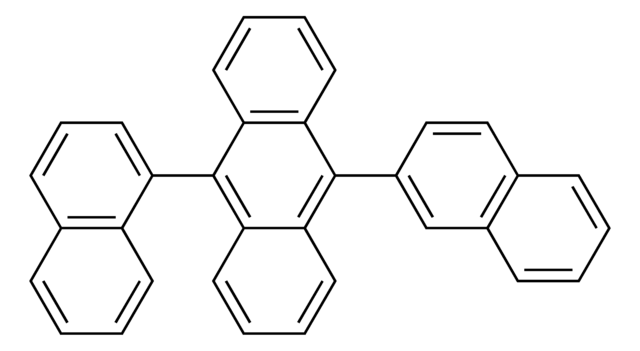938971
Postassium hydroxide ChemBeads

Synonym(s):
Caustic potash ChemBeads
Sign Into View Organizational & Contract Pricing
All Photos(1)
About This Item
Empirical Formula (Hill Notation):
KOH
Molecular Weight:
56.11
MDL number:
UNSPSC Code:
12352100
Recommended Products
description
Reagent Type: Inorganic Salt
Quality Level
form
solid
composition
, 14-16 wt. % (loading of base)
SMILES string
[OH-].[K+]
InChI
1S/K.H2O/h;1H2/q+1;/p-1
InChI key
LSXDOTMGLUJQCM-UHFFFAOYSA-M
General description
Potassium hydroxide (KOH) is also known as caustic potash. It is a strong alkali or a solid base compound that can be used in a variety of industrial applications. It finds its usage in the production of soaps, cleaners and detergents. It is frequently used to neutralize acids and prepare potassium salts of reagents.
Application
For general uses, product is also available in powdered form (757551)
Features and Benefits
ChemBeads are chemical coated glass beads. ChemBeads offer improved flowability and chemical uniformity perfect for automated solid dispensing and high-throughput experimentation. The method of creating ChemBeads uses no other chemicals or surfactants allowing the user to accurately dispense sub-milligram amounts of chemical.
related product
Product No.
Description
Pricing
Signal Word
Danger
Hazard Statements
Precautionary Statements
Hazard Classifications
Eye Dam. 1 - Met. Corr. 1 - Skin Corr. 1A
Storage Class Code
8B - Non-combustible corrosive hazardous materials
WGK
WGK 3
Flash Point(F)
Not applicable
Flash Point(C)
Not applicable
Choose from one of the most recent versions:
Certificates of Analysis (COA)
Lot/Batch Number
Sorry, we don't have COAs for this product available online at this time.
If you need assistance, please contact Customer Support.
Already Own This Product?
Find documentation for the products that you have recently purchased in the Document Library.
Eryptosis Indices as a Novel Predictive Parameter for Biocompatibility of Fe3O4 Magnetic Nanoparticles on Erythrocytes
Ran Q, et al.
Scientific reports, 5, 16209-16209 (2015)
Ru-assisted synthesis of Pd/Ru nanodendrites with high activity for ethanol electrooxidation
Zhang K,et.al
Nanoscale, 7(29), 12445-12451 (2015)
Thermochemically activated carbon as an electrode material for supercapacitors
Ostafiychuk B K ,et al.
Nanoscale Research Letters, 10, 65-65 (2015)
Ionic liquid versus prodrug strategy to address formulation challenges
Balk A, et al.
Pharmaceutical Research, 32(6), 2154-2167 (2015)
Franklin Feng Tao et al.
Nature communications, 6, 7798-7798 (2015-08-05)
It is crucial to develop a catalyst made of earth-abundant elements highly active for a complete oxidation of methane at a relatively low temperature. NiCo2O4 consisting of earth-abundant elements which can completely oxidize methane in the temperature range of 350-550 °C.
Our team of scientists has experience in all areas of research including Life Science, Material Science, Chemical Synthesis, Chromatography, Analytical and many others.
Contact Technical Service






